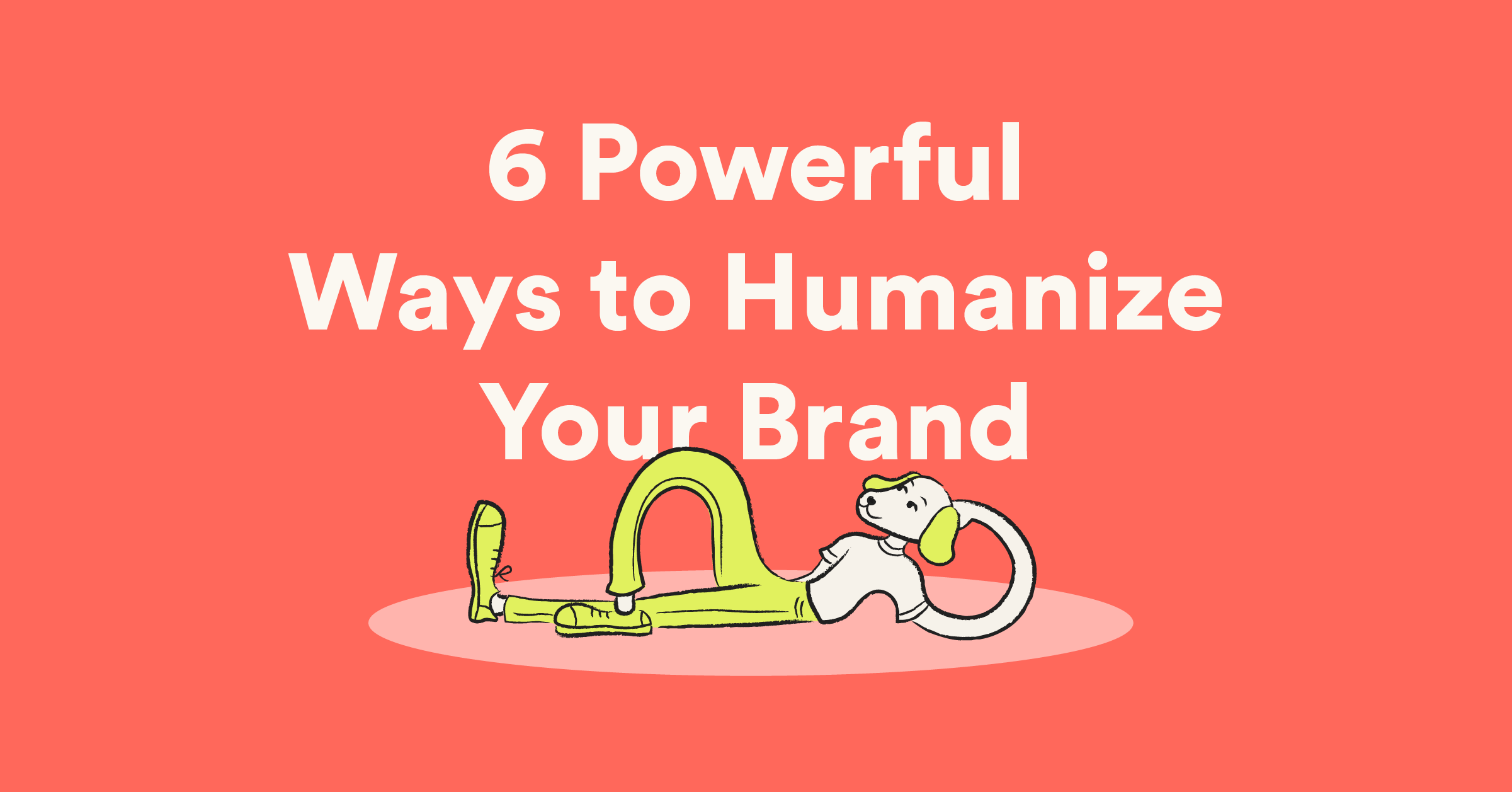The average email open rate across industries is 19.66% in 2022.
If your open rate falls below that, it’s probably for one of two reasons:
- Subscribers don’t want to hear from you (unlikely, since they signed up for your emails)
- You’re not framing your subject lines to show what’s in it for them.
People want to know that your email will entertain them, help them close a knowledge gap, improve their work, or do something else for them. Notice the keyword yet?
Before people open your email, they want to know that it’s written for ‘them’.
And that’s where most email marketers fail.
We’re often too close to our product to imagine that anyone would fail to see how outstanding it is. So we send emails that say things like “New paid product feature”, or “let’s have a call” — or some variation of those. But those subject lines don’t talk about them, they talk about you.
The job of the email subject line is to make the reader know they want to see the email.
And it’s not about creativity. If it was, no one would open the transaction alerts from banks. It’s about recognizing that your subscriber is human, and framing what you have to share such that they can see the benefit in it.
Here’s how to increase email open rates with human-to-human subject lines — even if you have good open rates already 👌
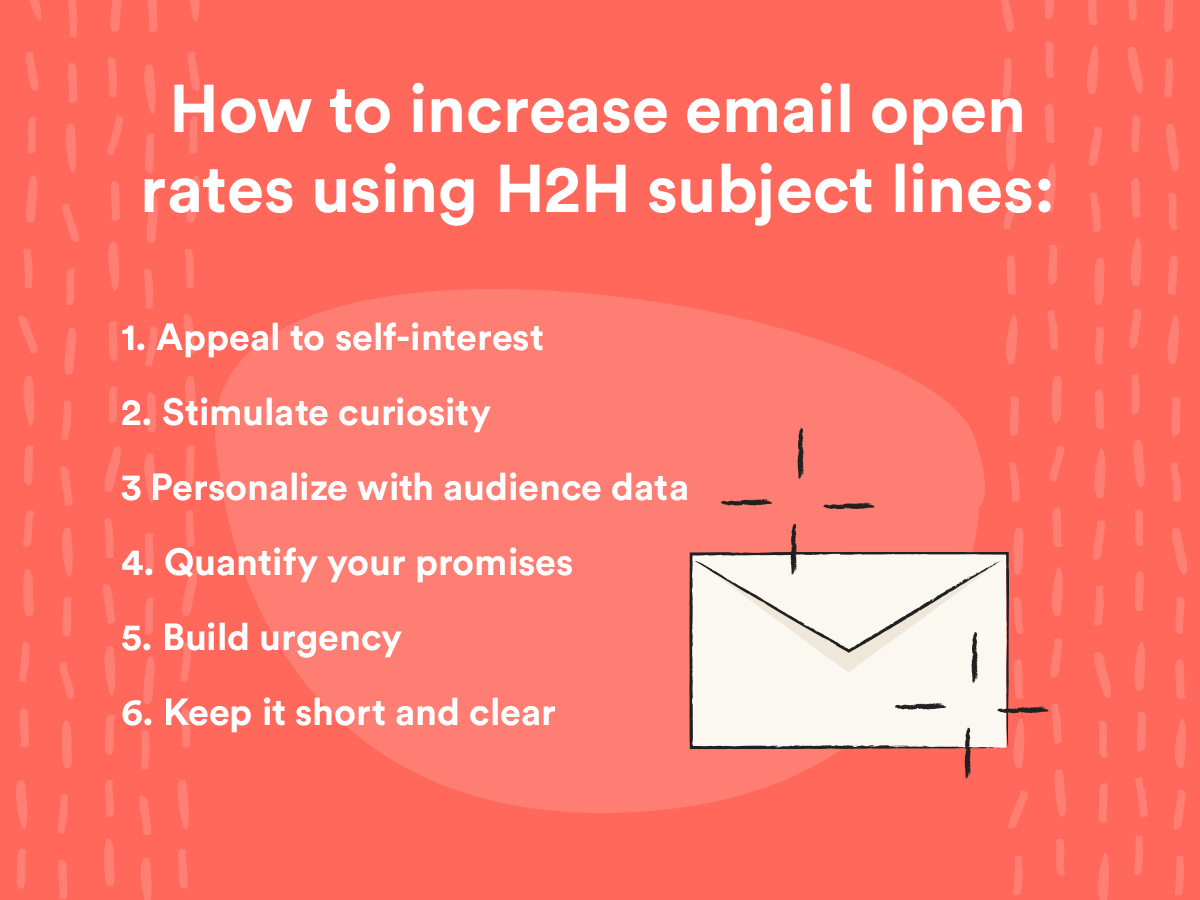
1. Appeal to self-interest
Law 13 of Robert Greene’s 48 Laws of Power says when you want something, “Appeal to People’s Self-Interest, Never to their Mercy”. People don’t care about you — or your product — and if you focus on yourself, you lose them. Instead, they want to hear how your proposition benefits them.
Several studies back up this law too. In 2020, a team of researchers examined how messaging affected solar adoption in 29 different cities. They found people were twice as likely to adopt solar power when the message focused on personal gain for the adopter rather than social responsibility.
So how do you appeal to self-interest?
Faizan Fahim, Growth Marketer at Breeze.io (a Magento Hosting Platform) says their best performing subject line is {{name}}, load {{store name}} store in 3 seconds. A 72% open rate.

The store owners who receive this email campaign know that faster load times mean fewer cart abandonments. They’re likely looking for ways to shorten load time, so they click when they see this subject line.
Faizan keeps the reward specific (faster load times), and measurable (3 seconds) too. That is even better for appeal because people know exactly what they’re getting from the headline.
Here’s another example from Aurelius Lab’s email list. They are a UX research tool and people in their audience will try to do sentiment analysis for research. So founder, Zack Naylor, uses the subject line Sentiment Analysis for UX [😃/😞] + Grouping Global Tags to get a 38% open rate.
Consider what problem your email subscribers may deal with. Then promise a solution to that problem in the headline.
2. Stimulate curiosity
Research shows that the brain releases dopamine — a feel-good chemical — as a reward for satisfying our curiosity. So once we encounter a knowledge gap or something else we don’t know, we want to figure it out.
Take this Canva email, for example: What are the top 10 Facebook templates in the US?
It opens so many loops in a designer’s or small business owner’s mind:
- Which Facebook templates do people use most?
- Why do they use them?
- What results have they gotten with them?
- How similar are our designs compared to those of the top templates?
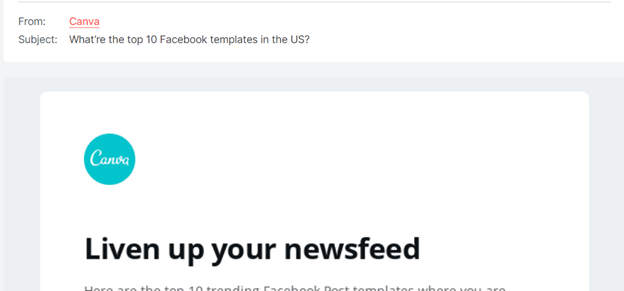
Subscribers will click to find the answers to those questions.
Use headlines that cater to at least one of the five dimensions of curiosity:
-
- Deprivation sensitivity – a knowledge gap that needs to be filled
- Joyous exploration – fascination with a subject or concept
- Social curiosity – a desire to learn more about other people
- Stress tolerance – the willingness to embrace confusion, doubt, and other forms of distress
- Thrill-seeking – a desire for adventure
Here are some spin-offs of the Canva subject line based on the dimensions of curiosity:
- What’re the top 10 Facebook templates in the US? (Deprivation sensitivity)
- The science behind good Facebook ad design (Joyous exploration)
- The 3 Facebook templates Noah Kagan uses (Social curiosity)
- Your Facebook ad design is crap, here’s why (Stress tolerance)
- Can you tell what makes a good Facebook ad design? (Thrill-seeking)
Tip! Mistakes can be a curiosity goldmine for email subject lines. See how Sketch plays on the Deprivation Sensitivity/Social Curiosity dimensions with a subject line that highlights a mistake they made. I would open that.
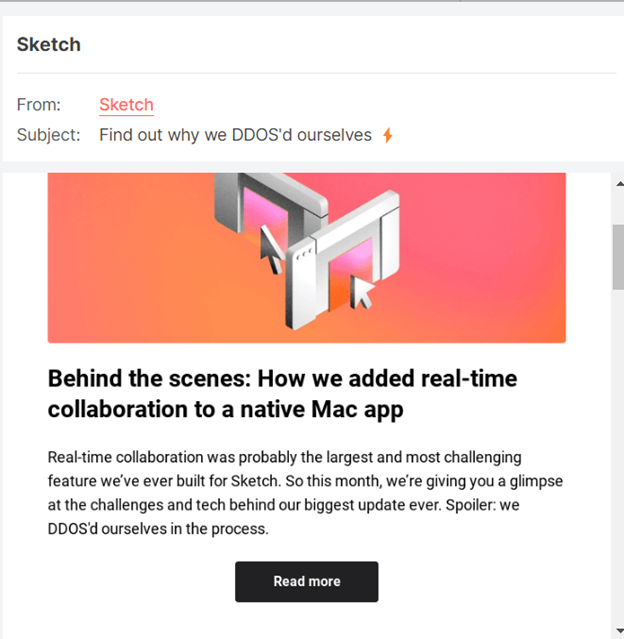
3. Personalize with audience data (but not first names😲)
In a study, GetResponse found that triggered emails performed almost twice better than newsletters. Open rates for triggered emails reached 35.64%, while newsletter open rates sat at 20.58%. That’s because triggered emails work with personalized audience data visible right from the subject line.
“Want high open and click-through rates? Send automated emails triggered by your customers’ behavior… with marketing automation, you can collect important data along the customer journey—and use it to segment your list and personalize your content.”
— Irek Klimczak, Senior Project Manager @ GetResponse
But personalization doesn’t mean adding a first name tag to your subject line (cue should you open this email [firstname]?). The GetResponse study found that as of 2022, open rates were actually lower when subject lines included this form of personalization. I think more people understand how marketing works now and they know it’s an automated email. So a name in the subject line may come across as more sales-y than personalized.
Instead, personalize the subject line with their interests.
Ruben Gamez, Founder of SignWell says their best performing email subject line is “Exactly when (and how) to follow up”. It’s gotten a 42% open rate after almost 90,000 sends.

According to Ruben, people receiving this drip campaign are getting important agreements signed.
Because there’s so much on the line, they face anxiety around following up. Surely they’re interested in advice that tells them how to follow up.
The headline takes that interest into account and promises them an exact answer to what they’re unsure about.
4. Quantify the promise
Look at these two subject lines for the same email. Which would you open?
- How to increase email open rates
- How to increase email open rates by 87.5%
Most people would choose no. 2. Here’s why.
While subject line no. 1 is generic — you don’t know if it’s a 5% increase we’re talking about — no. 2 is specific. That specificity sets an expectation and allows readers to picture a clear outcome. In this case, I can take my open rate from 20% to almost 40%. And so they open the email because it applies and appeals to them.
A few ways to quantify the promise from the example we shared:
- Share percentages, e.g. by 87.5%
- Time/date stamp it, e.g. in 2022
- Include the number of steps, e.g. in 3 steps
- Include the number of tools, e.g. with 3 tools
- Define what it’s not with the “without”, e.g. without clickbait headlines
Sleeknote, a popup builder tool, does a perfect job including the “without” in this example email.
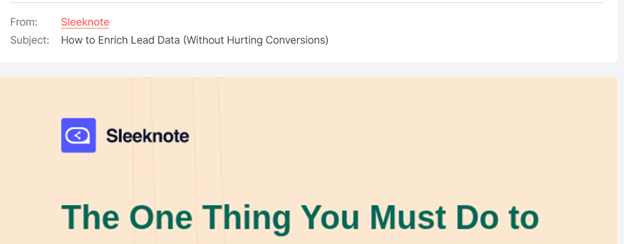
5. Build urgency
GetResponse found that subject lines with the word “now” scored an open rate of 31.73%. That’s the 5th highest open rate on the list and with little statistical difference from the 3rd and 4th scores.
I searched my inbox for the word “now” and every subject line suggests something that’s happening now, or something I need to do now. That’s urgency!
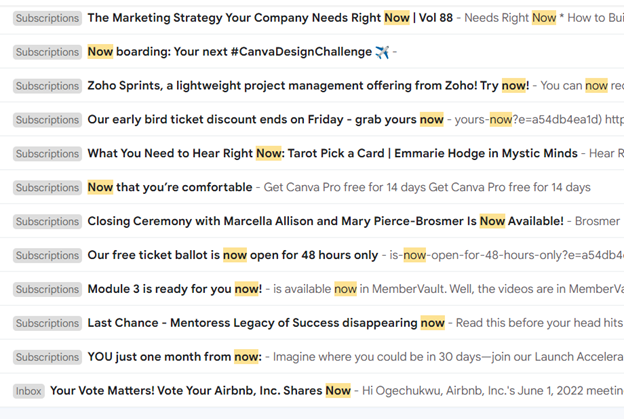
You build urgency with your subject lines when you include or imply deadlines with phrases like:
- Now
- Only
- Today
- Limited
- Exclusive
- Tomorrow
- Temporary
- In 48 hours
- Last chance
- Disappearing
Here’s Zapier using the word “tomorrow” to build urgency in this transactional email.
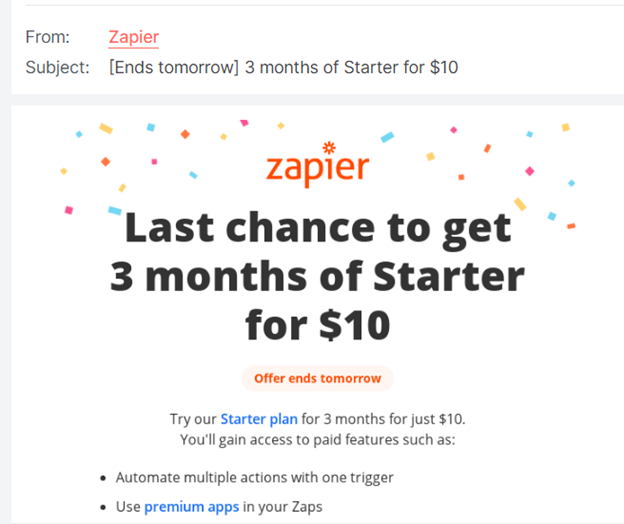
6. Keep it short and clear
You may have a great headline, but if your subscribers can’t read it all, they might scroll past your email.
Litmus found that most people open emails on their mobile phones. Here’s the exact distribution for 2020, where mobile surpasses webmail and desktop for all quarters except quarter 2.
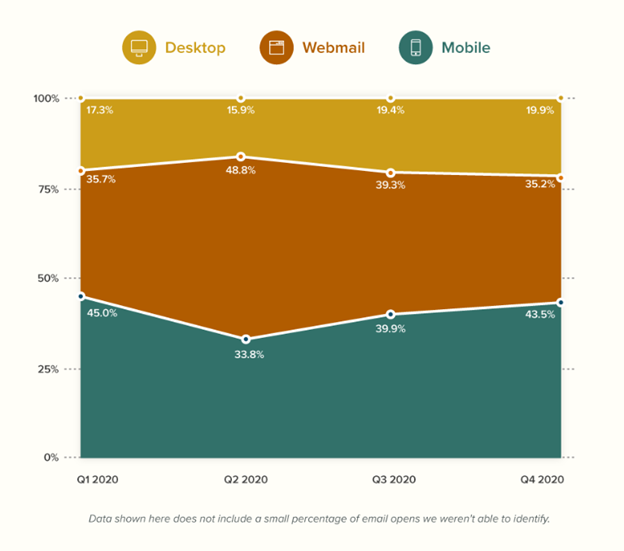
While the average subject line is 44 characters long, mobile phones can only accommodate around 33 characters in the field of view. So email subject lines that look fine on webmail or desktop, may not display in full on mobile.
Andrew Kamphey, Founder of Better Sheets says their best performing subject line is “Free Template“. Short and clear, it boasts of a 55.8% open rate.
Use email headline preview tools like Email Tool Tester, or Zurb’s Test Subject to preview your subject line before you send. If it cuts off, you need to reduce the characters in it.
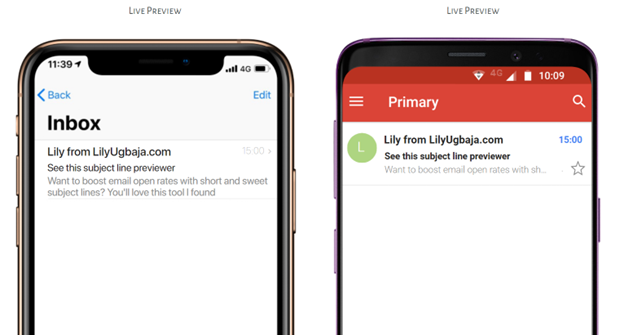
7 bonus tips to help you increase email open rates
Email open rates are not isolated to your subject lines alone. Your delivery rates, the email content itself, all these things matter for your open rates. Here are some things you can do in the email itself that will help boost open rates for future emails:
- Send emails from email addresses with a human sender name and photo, so subscribers remember that there are humans behind the brand.
- Use inclusive phrases, e.g. “salespeople instead of salesmen or saleswomen” to include everyone receiving your email campaigns. Tools like Alex can help you check for this.
- Add a prominent “Unsubscribe” link to your emails, so people who no longer want to receive them can unsubscribe rather than scroll past or mark you as spam.
- Add a preview text to supplement short headlines and give hints about what your email says.
- Ask subscribers to add your email to their address book in your welcome email. One tactic I’ve used is to hint at something useful I’m going to send in the next email and how it may get caught in a spam filter if I’m not in their address book.
- Ask subscribers to reply to your welcome email. That whitelists your email and lessens the chances that you’ll end up in the spam folder. I’ve had success with the wording “reply with the no. 1 challenge you’re facing right now and I’ll tell you what you can do”.
- Offer value in your emails to build a good sender reputation with your recipients.
To improve email open rates, stop emailing businesses — email humans
At the end of the day, it’s not about tips or tricks to improve mere metrics. The open rates themselves don’t matter; after all, you can’t accurately track opens on some devices (looking at you, Apple!).
It’s about getting people to fall in love with your brand because of the value you offer. And a consistently higher open rate is nothing more or less than a proof of that.
When you use these tips to emphasize the value of your emails right in the subject line, you win. Subscribers will open because they trust you to deliver value, and you get more chances to build the relationships that lead to sales, upgrades, and advocacy.
Need help with building and executing an email marketing strategy that considers all of this human intelligence? Literal Humans can help you build and optimize your emails to win, and nurture loyal subscribers who buy from you. Book a free strategy session with us to discuss your email marketing strategy now.


